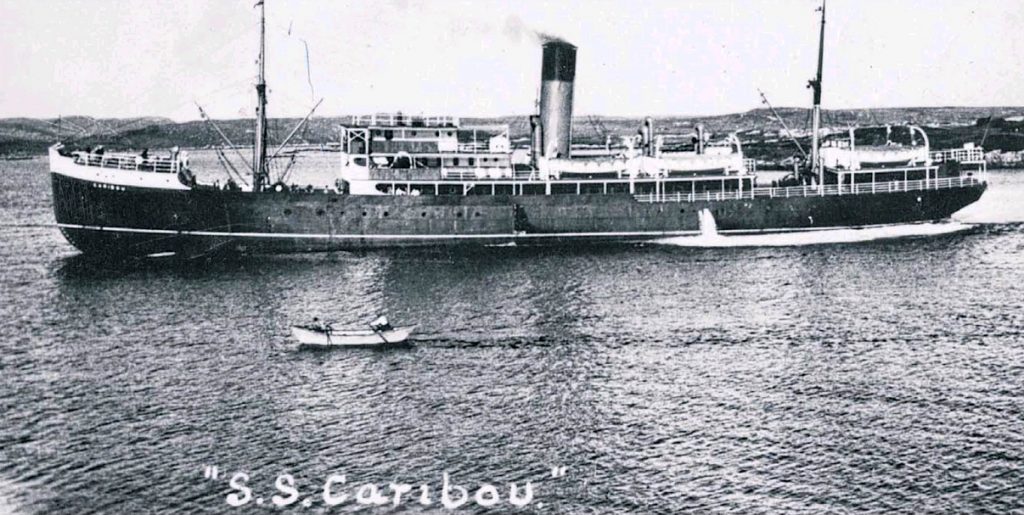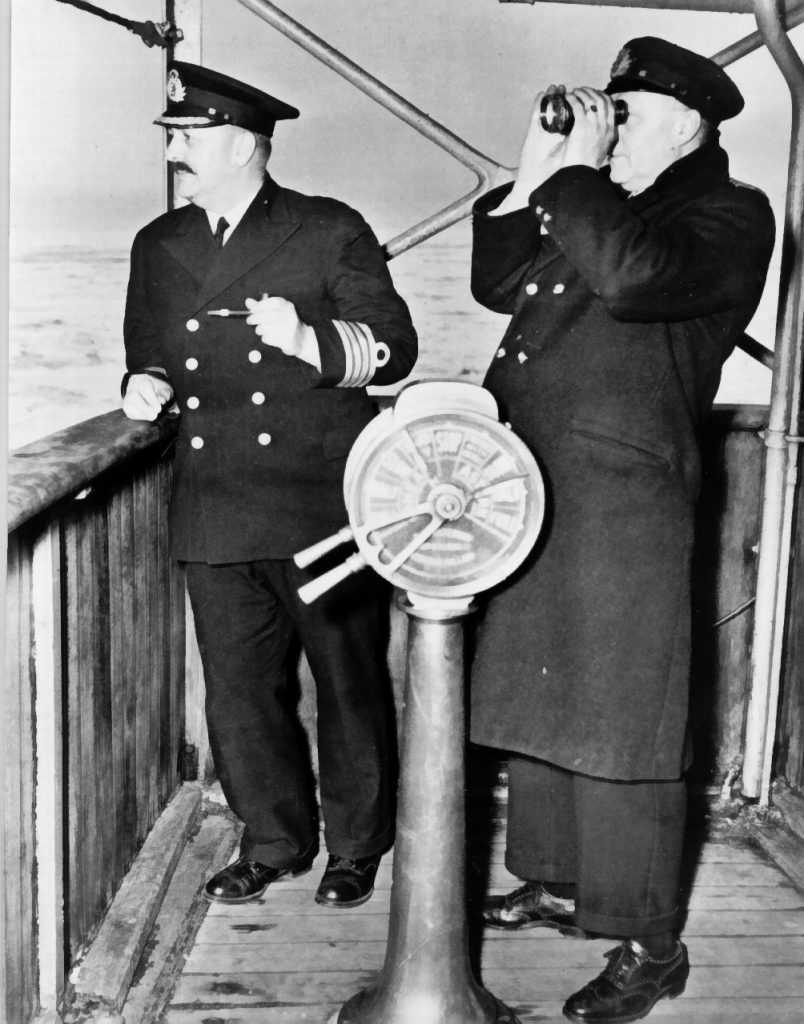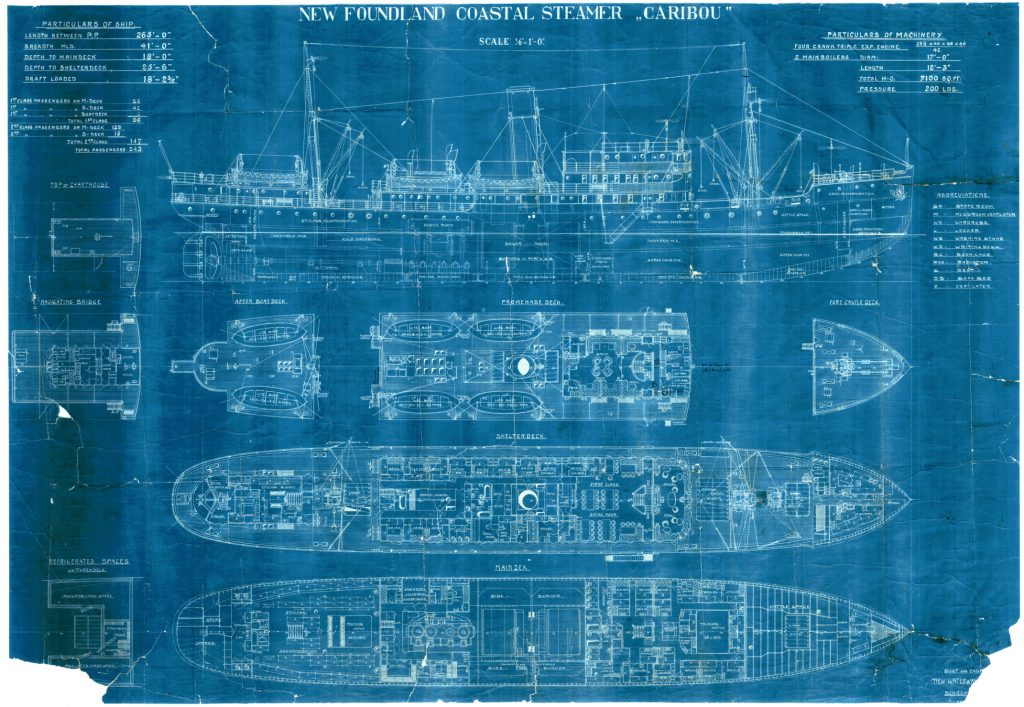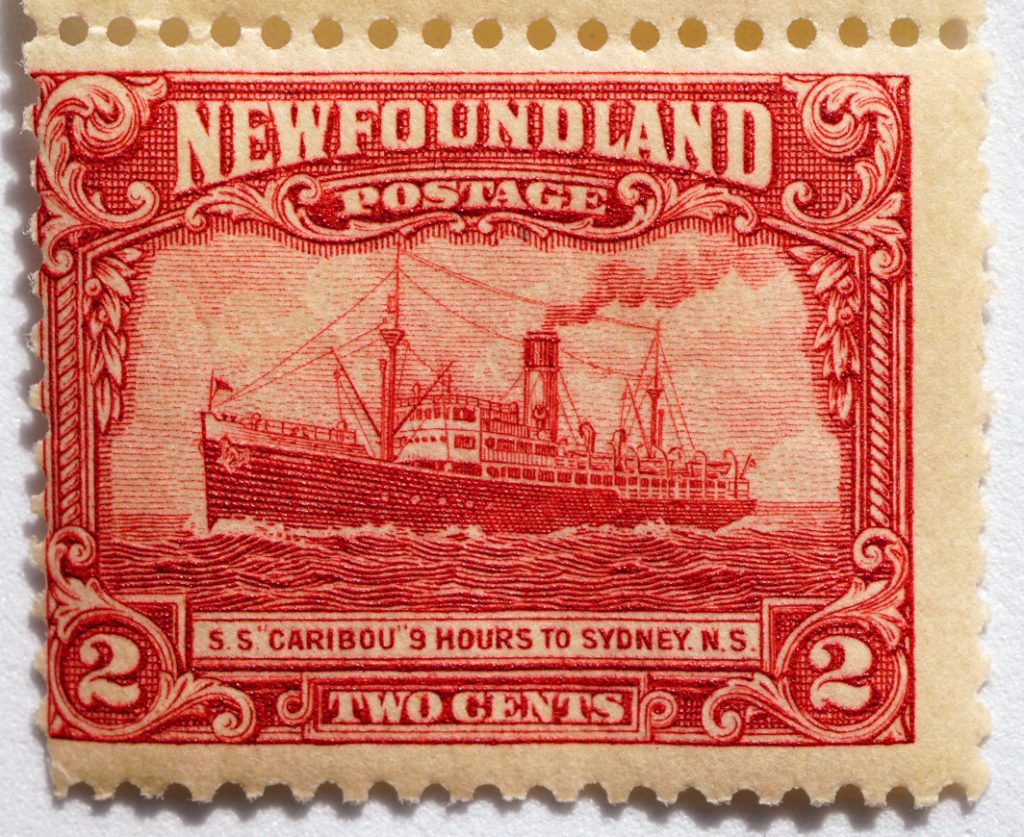S.S. “Caribou” and her gallant crew
Captain Benjamin Taverner claimed he’d won a medal for his tall tales. “But,” an acquaintance wrote, “Ben knew his capacities and did not overrate them.”
Ben boasted that, in 17 years, S.S. Caribou had not missed one of her three weekly crossings. Her reinforced steel hull had ploughed Labrador sea ice in the seal hunt. She sailed the Cabot Strait in eight hours. There was cold storage for cargo and steam heat in the cabins. The boat deck had a smoking saloon. Her staterooms were wood-panelled and there was a piano in the lounge. Meals arrived in the dining room on china and silver embossed with the Newfoundland Railway’s monogram.
At 62, Ben had captained S.S. Caribou for 14 years. He expected to retire soon and pass the helm to his son, First Officer Stanley Taverner. Another of his sons, Harold, was also an officer on the ship. Five other pairs of brothers crewed the ferry that night. The Taverner sons were not the only ones serving with their father: William Pearcey and his son Billy as well as Elias Coffin and his son Hubert “Bert”, Coffin, were also among the sailors on board.
Engineer Thomas Moyst, age 66, was related to the two Charles Fords (uncle and nephew). Victor Lomond was the son-in-law of uncle Charles Ford. Cyril Melbourne was the brother-in-law of brothers Ernest and John “Jack” Dominie.





